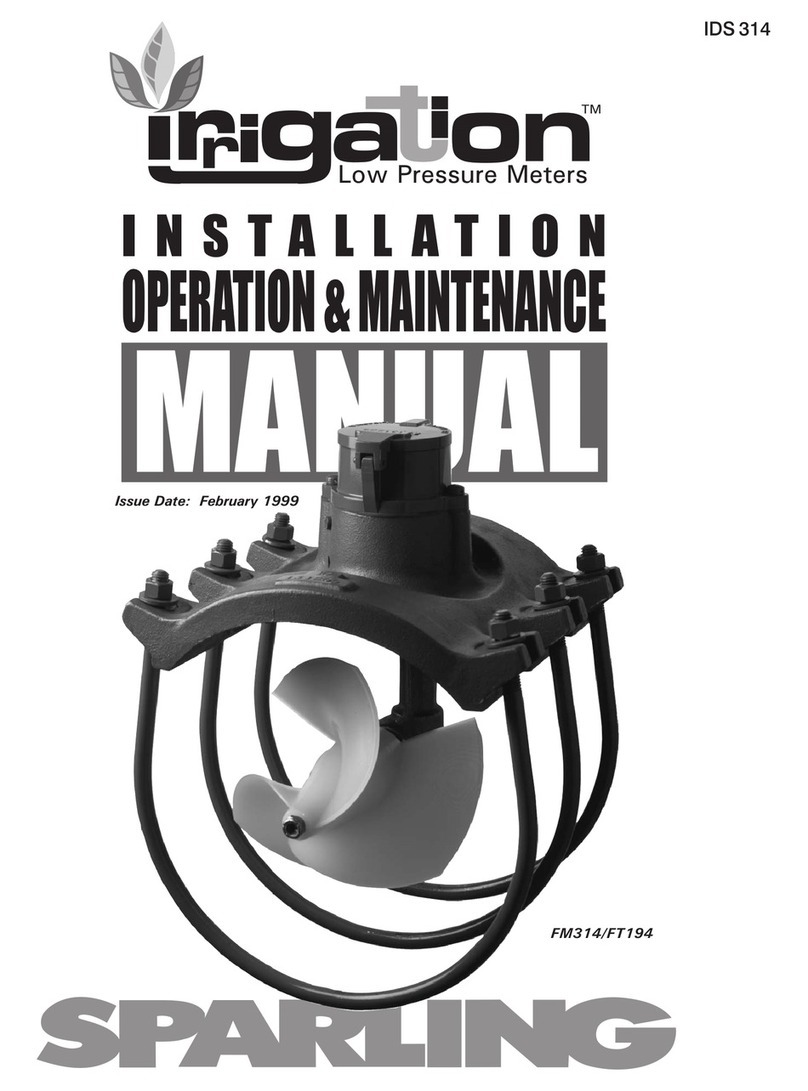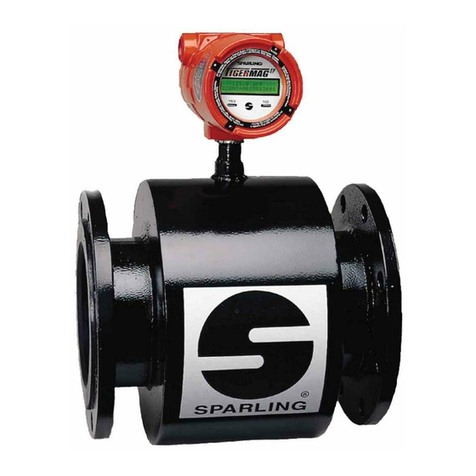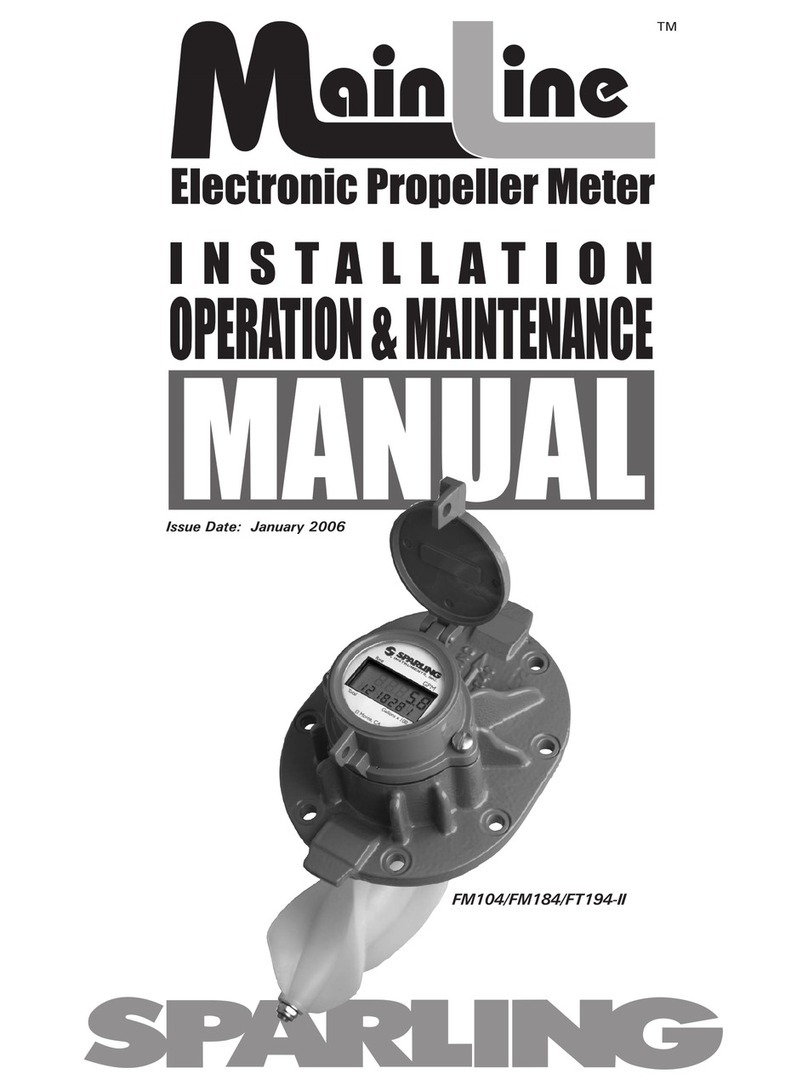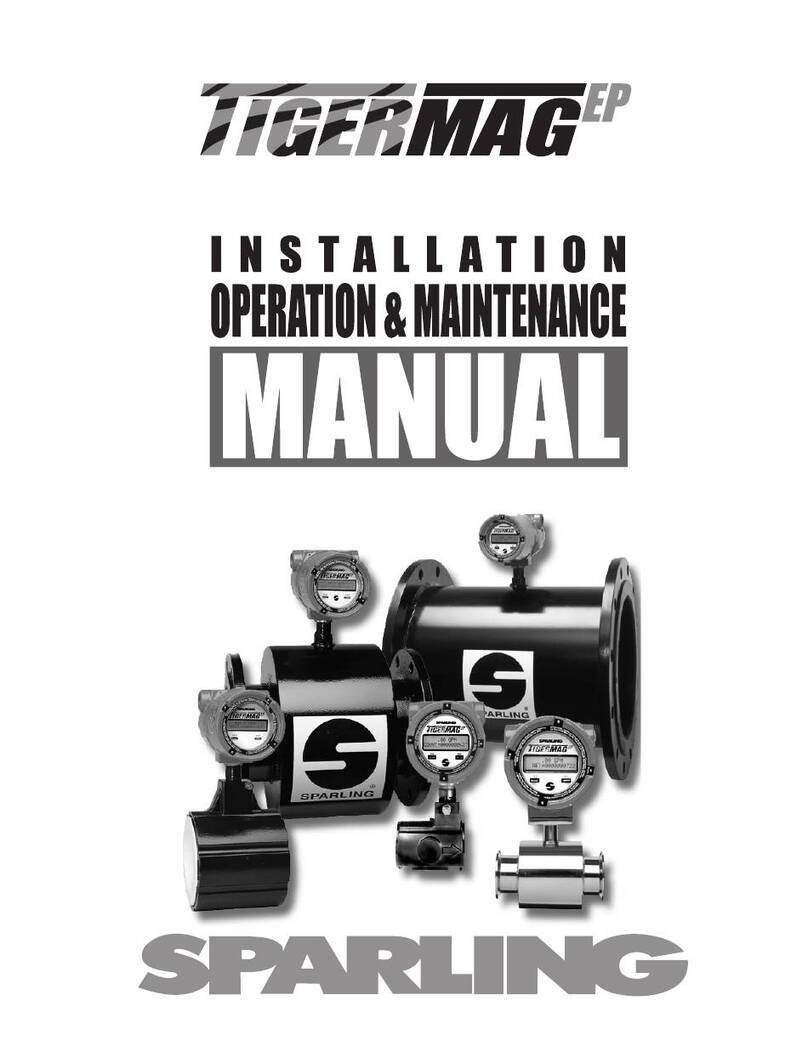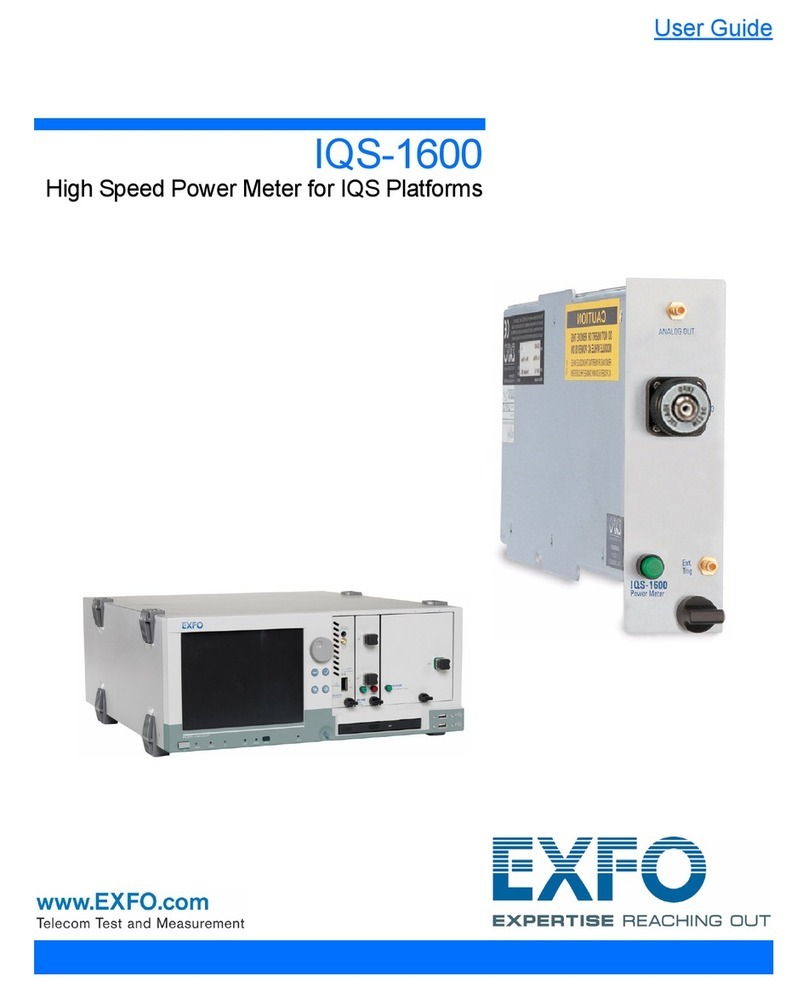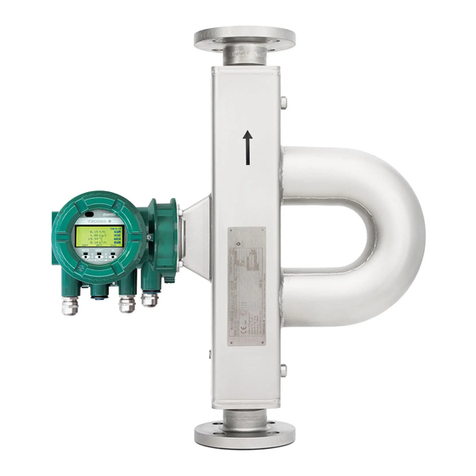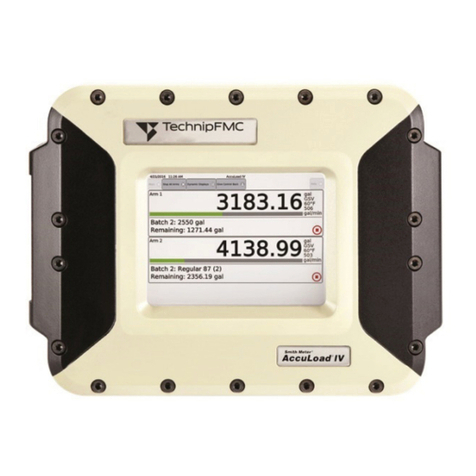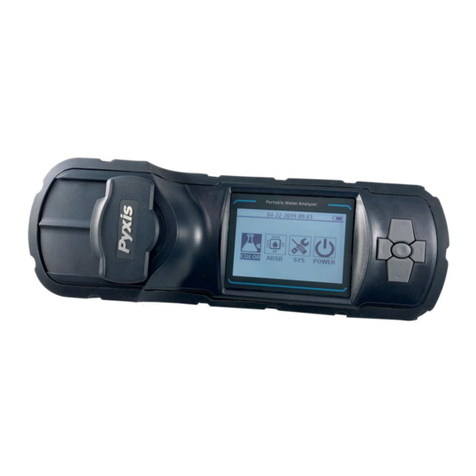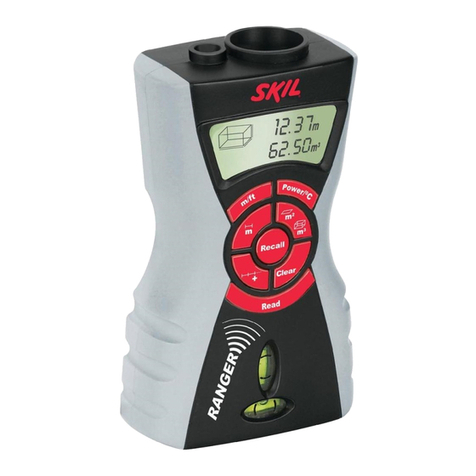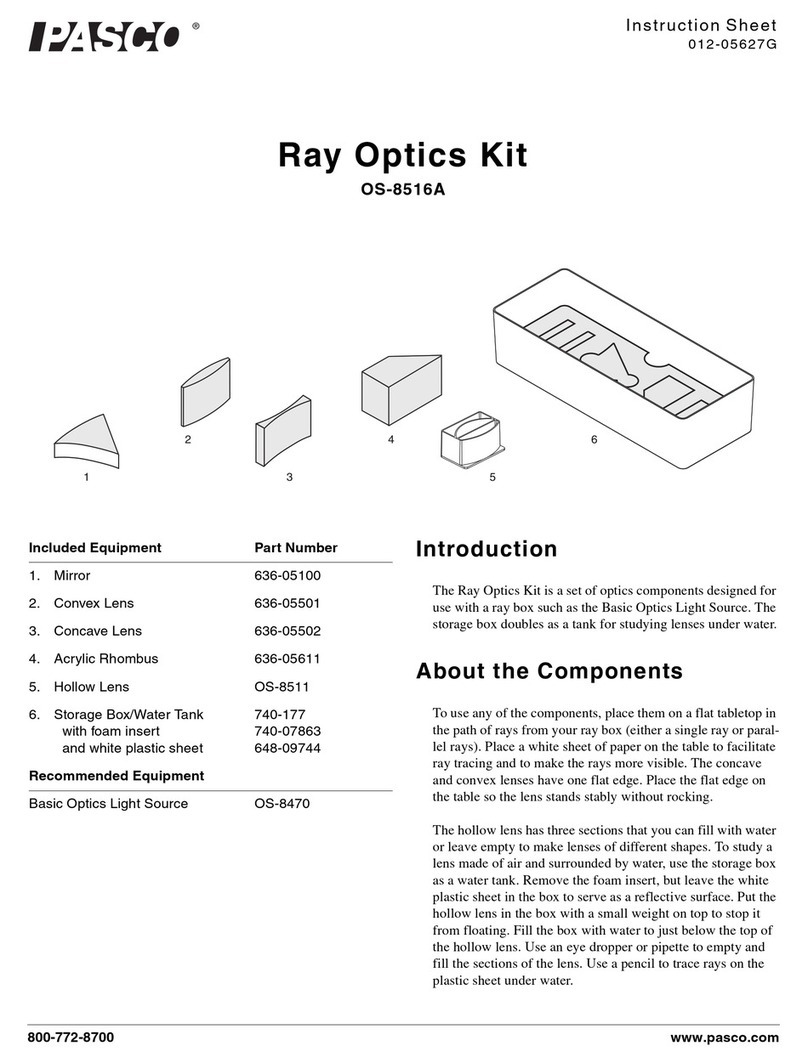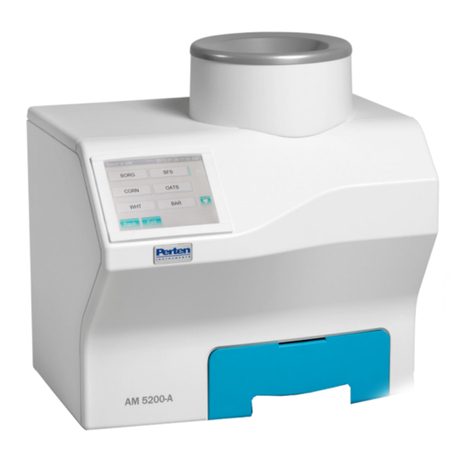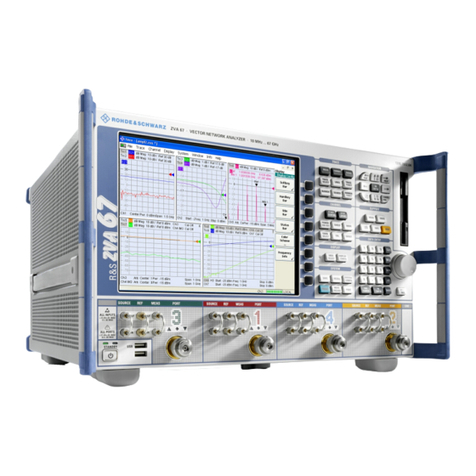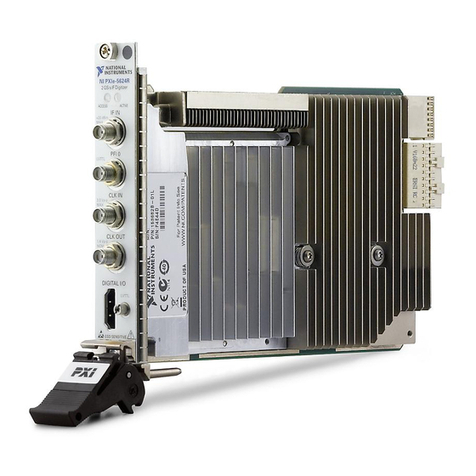SPARLING MainLine FM-104 Owner's manual

Issue Date: March 2002
TM
FM104/FM184/FT194

NOTE:
To insure all warranties expressed or implied are allowed, it is important
that the unit be installed and calibrated per this manual. Follow all instruc-
tions starting in SECTION 1.0 on page 1 concerning verifying equipment and
operation, installation instructions, notes and wiring instructions.
SPARLING INSTRUMENTS, INC.
4097 N. Temple City Blvd.
El Monte, CA 91731
Ph (626) 444-0571
Fx (626) 452-0723
Email: [email protected]
Internet: http://www.sparlinginstruments.com
Copyright© 2002 Sparling Instruments, Inc.
All rights reserved.

IDS104/184/194 Page i
TABLEOF
CONTENTS
Section1-Unpacking &Inspection .............1
1.1 Receiving & Inspection .................................. 1
1.2 Storage ........................................................... 1
1.3 Operation ....................................................... 1
1.4 Specifications ................................................. 2
Section 2 - Pre-Installation............................3
2.1 Process Fluid ............................................... 3
2.2 Handling Precautions................................... 3
Section 3 - Installation.....................................3
3.1 Site Selection Criteria ................................... 3
3.2 ounting Tubes/Saddles ............................. 4
3.3 ounting the eterhead .............................. 5
Section 4 - Flow Rates & Dimensions ........6
Section 5 - Preventative Maintenance
ofMeterhead .......................................................8
5.1 Annual Inspection of eterhead .................... 8
5.2 Disassembly & Repair ................................... 9
5.3 Reassembly .................................................. 9
Section 6 - Preventative Maintenance
ofTotalizer..........................................................10
6.1 Inspection of Totalizer .................................. 10
6.2 Extended Battery Life ................................... 10
6.3 Troubleshooting .......................................... 10
Section7-WiringDiagrams
Integral/Remote/4-20mA Output/
FT194Forward&Reverse Register 11
Section 8 - Programming of
ElectronicTotalizer.......................................... 13
8.1 Preliminary Calculations ............................... 13
8.2 Connect Programmer ................................. 14
8.3 Programming ode.................................... 15
8.4 Reset Totalizer ............................................. 16
8.5 Programming Analog Rate Output .............. 16
Figures
1.1 eter Operation ........................................... 1
3.1 Installation Considerations ........................... 3
3.2 Tube mounting ............................................. 4
3.3 Tube mounting .............................................. 4
3.4 Tube mounting .............................................. 4
3.5 Install Straightening Vanes ............................. 4
4.1 Dimensions ................................................... 6
5.1 Inspection Steps ........................................... 8
5.2 Disassembly & Repair ................................... 9
7.1 4-20mA & Scaled Pulse Output .................... 11
7.2 Remote ounting ........................................ 11
7.3 4-20mA Installation on Forward/Reverse Unit 12
8.1 Programming .............................................. 14
8.2 Total Scale ................................................... 15
8.3 Total Scale DP .............................................. 15
8.4 Total Disp DP ............................................... 15
8.5 Rate Scale ................................................... 15
8.6 Rate Scale DP .............................................. 15
8.7 Rate Disp DP ............................................... 15
8.8 Update ........................................................ 15
8.9 Smooth ....................................................... 15
8.10 Disp To ........................................................ 15
8.11 Reset Totalizer ............................................. 16
8.12 4mA ............................................................. 16
8.13 20mA ........................................................... 16
Tables
1. Flow & Dimensions ....................................... 7
2. Conversion of Gallons to Other
Engineering Units ......................................... 13
3. Rate eter Scaling Factors ......................... 14
4. Standard Registration for FT194 .................. 16
PagePage


1.0
Unpacking &
Inspection
1.1 Receiving & Inspection
Locate the packing slip shipped with your unit, this will list all the items sent with the shipment.
Compare packing slip to order acknowledgement you received previously and verify that all items
correspond.
If all items correspond, examine the shipping containers for unusual denting and/or damage. If
shipping containers are in good condition, begin unpacking. Do a general examination of each
part as it is removed from its packaging, checking for any obvious signs of physical damage.
If there is no apparent damage to the items you may begin the installation procedure in SECTION 3,
although we recommend that you familiarize yourself with SECTION 2: Application/Installation
Considerations prior to going to SECTION 3.
If any item shows damage due to shipment call the Customer Service Department immediately, at
(626) 444-0571 you will then be advised of the measures to take.
If you find items are missing from your shipment, contact the Sparling Customer Service Depart-
ment immediately, at (626) 444-0571. They will verify the order and trace any missing item for you.
1.2 Storage
This equipment should be stored in a clean, dry environment. Do not store outside in an
unprotected area. Observe the storage temperature requirements.
1.3
Operation
The odel's F 104 and F 184 feature the FT194 battery powered
electronic rate/totalizer which senses the rotation of the propeller
by means of a magnetic pickup sensor located in the gearbox. The
rate/totalizer and pickup are completely isolated from the flow
stream.
Utilizing the simple principle of the screw propeller, the Sparling
F 104/F 184 registers total flow, much as an odometer registers
auto mileage. The electronic rate/totalizer converts the revolutions
of the propeller to cubic feet, gallons or other standard engineering
volumetric units. The rotation of the propeller also affords a basis
for indicating and recording gallons per minute or other rates.
The LCD digital display is activated by a photoelectric cell. When
the cover of the bonnet is opened, the display is activated.
The display will go into "sleep mode" after a preprogrammed
time interval. Low light conditions may require the use of a
flashlight to activate and read the display.
IDS-104/184/194 Page 1
Figure 1.1
Meter Operation

1.4
Specifications
FM 104/184
Operating
Temperature 32°F to 100°F (higher temperature construction is available).
Storage Temperature -40°F to 175°F
Materials of
Construction Coverplate .............................................................................. Cast Iron (2" - 14")
Coverplate .................................................................................. Steel (16" - 72")
Propeller ......................................................................................... Polyethylene
Gearbox ................................................................................... Bronze (2" - 30")
Gearbox ............................................................................... Cast Iron (36" - 72")
echanical Parts........................................................................... Stainless Steel
Saddles ................................................................................ Cast Steel (6" - 14")
Saddles ..................................................................... Fabricated Steel (16" - 72")
eter Tubes / Coatings ........ Cast Iron / stainless steel metering section (2" - 3")
Fabricated Steel (4" - 36")
Wetted parts high build epoxy polyamide paint EPA approved for potable water
FT 194
Accuracy Rate: ±0.25% of full scale
Totalization: ±0.1% of rate (in addition to propeller meter accuracy)
Power 3.6V Lithium battery (8 year average life)
4-20mA and scaled pulse output with external 24 Vdc power source
Battery operating temperature: -55°F to 185°F
Operating Temperature -10°F to 158°F (-23°C to 70°C)
Storage Temperature -40°F to 158°F (-40°C to 70°C)
Display 5-digit rate indicator (0.35 inches high)
8-digit totalizer indicator (0.25 inches high)
LCD 2-line display with simultaneous rate and total, and low battery indication.
Construction Sturdy die cast aluminum bonnet
NE A-4X, NE A-6, & IP67 environmental ratings.
Optional Outputs 4-20mA, scaled pulse output and open collector output (100mA at 30 Vdc), contact
on time 100 milliseconds.
User selectable units of measure for every contact closure.
Scaling Totalizer Scaler - 0.0001 to 9999.0 / Rate Scaler - 0.0001 to 9999.0
Decimal point can be moved to five positions
Scaling Units Totalizer - Gallons, cubic feet, liters, cubic meters, acre feet
Rate - GP , CFS, GD, LPS, 3/Hr
Electrical Rating General Purpose
Page 2 MainLineTM
Power Supply Voltage (VDC
Output Load (Ohms

Figure 3.1
Installation Considerations
3.0
Installation
3.1 Site Selection Criteria
Choose a location that
assures a full pipe of water
flowing at or above the
minimum velocity for the
meter. There should not be
any enlargements, diffusers
or obstructions upstream
that would produce a jet or
spiraling flow into the meter.
Ten diameters of straight
pipe upstream and 1
diameter downstream are
recommended to avoid
errors caused by skewed
velocity profiles. See figure
3.1.
A jet caused by a partially
opened valve, a centrifugal
pump, or a pipe enlarge-
ment upstream from the
meter can cause inaccu-
rate registration.
Often such disturbances
can be avoided by locating
the meter on the suction
side of the pump. The
meter will register just as
efficiently on a vertical or
slanting pipe as on a
horizontal line. The straight-
ening vanes eliminate cork-screw effects in the flow profile of water. Flow conditioners may be required in
installations where less than optimum conditions exist. See Figure 3.1.
2.0
Pre-
Installation
2.1 Process Fluid
The F 104 and F 184 ainLine Electronic Propeller eters are designed to operate with relatively clean
process water. The percentage of solids should not exceed 0.5%. While the propeller shape is designed to shed
debris and the propeller material is durable and somewhat pliable, large solid objects in the flowing stream
could damage or become entangled in the propeller, causing inaccuracy or malfunction. These meterheads will
function despite the presence of small abrasive particles (such as sand) but the life of the propeller shaft
bearings may be reduced.
2.2 Handling Precautions
Although this device is ruggedly constructed, it is a precise measuring instrument and can be damaged
by rough handling or if dropped. If the meterhead is not shipped already installed into a flow tube, care
should be taken to avoid damaging the propeller during installation.
IDS 104/184/194 Page 3

Page 4 MainLineTM
3.0
Installation
cont'd.
3.2 Mounting Tubes & Saddles
eterheads can be mounted into a round process line using 1)
a Sparling odel T1 In-Line Flow Tube or 2) a Sparling odel
S1 Welding Saddle.
3.2.1 eterhead with T1 In-Line Flow Tube (2" - 36")
a. Be sure to read Section 3.1 Site Selection Criteria
prior to installing your meter.
b. Install the meter tube in the line just as though it were
a short length of pipe.
c. The propeller must face the on-coming flow. Arrows
on the meter tube and cover plate will point in the
direction of the flow.
3.2.2 eterhead with S1 Welding Saddle (6" - 72")
a. For welding 6"-14" saddles to steel or wrought-iron
pipe, place the saddle on the pipe and scribe a
line INSIDE the saddle.
b. Cut or burn a full opening in the pipe so there will be
no projections of the pipe beyond the straight inside
edge of the saddle. Smooth the pipe around the
opening to make a good surface for the saddle.
c. Cast steel saddles (sizes 6" - 14") should be tacked
first, then welded in place, taking care not to over-
heat any part of the saddle.
d. Fabricated steel saddles (sizes 16" - 72"):
(i) Place riser on pipe (Fig. 3.2). Scribe around
outside of riser as shown. Cut hole.
(ii) Insert riser into the hole in skirt plate (Fig. 3.3), do
not weld at this point. Pull skirt plate up against
the flange of riser.
(iii)Insert riser into cut-out in pipe. ake sure
bottom edge of riser is flush with I.D. of the
pipe and holes in the flange are straddling the
center line of pipe. Weld riser to inside pipe as
shown.
(iv)Lower skirt plate down onto pipe. Position to
achieve conformity with O.D. of pipe. Weld in a
continuous bead at point "A" and "B".
e. If straightening vanes are required, go
to section 3.2.3. If not, skip to section 3.3
3.2.3 Install straightening vanes (if required)
as shown on Figure 3.5.
Three straightening vanes are required.
Vanes should be equally spaced radially and
parallel with the longitudinal axis of the pipe (1)
Figure 3.4
Figure 3.5
Install Straightening Vanes
Figure 3.2
a. b.
Figure 3.3
Size eter 6-14 16-30 36 & 42 48-72
Dimension "A" 4 8 12 15

3.0
Installation
cont'd.
Bolting Vanes
a. For easy vane installation, place each vane in its equivalent position on the outside of the pipe (2) and
mark the location for bolt holes.
b. Drill holes. Install vanes inside the pipe. Place lead washer and then steel washer on the bolt on
outside of pipe and tighten nuts securely (3a).
Welding Vanes
a. Space vanes equally at 120° radially and locate longitudinally as shown.
b. (3b) Secure vanes with a continuous bead weld around both ends and with intermittant staggered
bead welds along the vane.
Note: Installations with both forward and reverse
flows* may require additional vanes on the
downstream side of the meter. Install in the same
manner, 4" from the downstream saddle opening.
*Option requiring dual remote mounted totalizers.
3.3 Mounting the Meterhead
3.3.1 Tube mounted meters (2" - 36")
2"-4" - Not required - meterheads are shipped with meterhead mounted in place.
6"-36" - Follow directions per Section 3.3.2 following.
3.3.2 Saddle meters (6" - 72")
a. Place gasket on the face of the saddle
b. 6" - 8" eters
Hold meterhead with propeller facing UPSTREA .
Lower propeller into pipe and slide it upstream to position for capscrews and secure the
coverplate.
c. 10" - 72" eters
Hold meterhead over opening with propeller toward you and blades lengthwise with the
pipe.
Tilt coverplate toward you.
Lower until one blade lies horizontally on the end of the saddle.
Ease the propeller down through the saddle with a "rolling" motion.
Turn the headplate so that the propeller faces upstream.
The arrow on the plate points in the direction of the flow. Tighten cap screws evenly (6"-14" sizes)
Insert screws and install nuts (16" - 72" only) tighten them evenly, and meter is ready to operate.
IDS 104/184/194 Page 5

Page 6 MainLineTM
3.781"
2.125"
.125" 2.995"
Integral Mount
aximum flow ranges can be safely exceeded by 50% when used intermittently (10-15% of the time). Your Sparling
meter utilizes specially designed propellers and bearings matched to your flow range to insure long life.
For proper configuration of meter construction anticipated flow ranges, including minimum and
normal flow rates expected, should always be specified on application sheets acocmpanying your
order.
4.0
Flow Rates &
Dimensions
Remote Mount
Figure 4.1
Dimensions

TABLE 1 - FLOW & DIMENSIONS
Weight (lbs) Dimensions (inches) Flow (gpm)
Fabr. Cast B Low Flow Std. Flow
Size Steel Iron L W CE GH
150 lbs 250 lbs Nin. ax. in. ax.
2 20 8.13 5.13 2.38 4.00 3.13 0.50 1.75 1.75 2.56 30 - 80 60 - 150
3 20 8.25 6.25 2.75 4.00 3.18 0.63 2.75 2.75 2.56 35 - 200 70 - 360
4 20 9.50 6.75 3.50 6.94 4.13 0.63 3.44 3.44 2.56 50 - 400 120 - 600
6 25 10.38 7.31 4.75 6.31 3.69 0.94 4.25 4.25 2.93 90 - 900 200 - 1600
8 29 11.00 10.63 7.00 6.31 5.81 -0.32 5.31 5.31 2.81 100 - 1200 240 - 2300
10 34 11.00 10.63 8.00 6.31 5.81 -0.32 6.31 6.31 2.81 125 - 1600 320 - 3000
12 36 11.00 10.63 10.00 6.31 5.81 -0.32 7.31 7.31 2.81 150 - 2200 400 - 4000
14 37 11.00 10.63 11.00 6.31 5.81 -0.32 8.00 8.00 2.81 250 - 3000 520 - 5000
16 210 23.50 23.50 13.00 12.00 8.20 4.25 12.25 12.25 2.88 350 - 3800 700 - 6800
18 210 23.50 23.50 16.00 12.00 8.20 4.25 13.25 13.50 2.88 450 - 4500 900 - 8100
20 215 23.50 23.50 16.00 12.00 8.20 4.25 14.25 14.50 2.88 550 - 5500 1100 - 9900
24 215 23.50 23.50 16.00 12.00 8.20 4.25 16.25 16.50 2.88 800 - 8500 1600 - 15000
30 220 23.50 23.50 16.00 12.00 8.20 4.25 19.25 19.50 2.88 1200 - 12000 3000 - 21600
36 825 32.00 32.00 25.25 18.75 9.20 6.50 23.00 24.00 3.13 1500 - 16000 3000 - 28800
42 835 32.00 32.00 25.25 18.75 9.20 6.50 26.00 27.00 3.13 2000 - 22000 4200 - 40000
48 1350 38.75 38.75 25.25 18.75 9.50 9.50 29.50 30.50 3.25 2500 - 28000 5400 - 50000
54 1360 38.75 38.75 25.25 18.75 9.50 9.50 32.50 33.50 3.25 3200 - 35000 6800 - 63000
60 1370 38.75 38.75 25.25 18.75 9.50 9.50 35.50 36.50 3.25 4000 - 42000 8400 - 76000
66 1380 38.75 38.75 25.25 18.75 9.50 9.50 38.50 39.50 3.25 4750 - 50000 10000 - 90000
72 1390 38.75 38.75 25.25 18.75 9.50 9.50 41.00 42.50 3.25 5500 - 60000 12000 -110000
"B" 16" - 72" for 150 psi only
IDS 104/184/194 Page 7

5.0
Meter
Maintenance
a.
b.
c.
d.
5.1 Preventative Maintenance — Annual Inspection of Meterhead
Preventative maintenance of the F 104 and F 184 is limited to annual inspection of the propeller shaft bear-
ings, propeller, straightening vanes and tube condition.
5.1.1 Remove Meterhead
Depressurize the line, remove the cap screws and slide the meterhead in the downstream direction.
Lift the downstream end of the coverplate and withdraw the meter from the line. It may be necessary
to maneuver the meter so that one blade tip can be lifted through the opening, allowing clearance for
the remaining blades.
5.1.2 Inspect vanes for damage and tubes and vanes for foreign matter
Examine the pipe for any foreign matter that may have accumulated. Look at the upstream ends of
the straightening vanes and remove accumulated matter. See if the vanes have been damaged -
straighten any bends.
5.1.3 Inspect Propeller & Bearings
a. See that the propeller blades are smooth and clean.
b. Spin the propeller with your fingers (a). The propeller
should spin freely without binding and crunching noises.
The register should advance properly.
c. Next, pull on the propeller (b). The propeller should
have a little freedom of movement (about 1/64") due to the
designed play in the bearings which allows grit to pass
through. If movement is over 1/64" but under 1/32" adjust
per 5.1.4 Adjust Bearings.
d. Finally, hold the propeller with your fingers and rock it
from side to side (c). There should be minimal movement
when rocking the propeller, about 1/64".
If you experience:
binding or crunching when spinning the propeller
the propeller has excessive play
it could signal excess bearing wear or failure. Go to Section
5.2 Disassembly and Repair
If the register does not advance properly, go to Section 5.2
Disassembly and Repair.
Check the gasket before replacing the meterhead. Replace it
if it is damaged. Finally, if everything checks out as it should,
return meter to line, bolt in place and repressurize the line.
5.1.4 Adjust Bearings
The front propeller shaft bearing is the key to the life of the meter. If it is kept in good condition the
other parts will last almost indefinitely.
Adjust the thrust screw (d) on the back of the propeller shaft plug to achieve 1/64" end play.
Screw the thrust screw until it comes in contact with the end of the propeller shaft, then back off
the thrust screw 1/4 turn and tighten the locknut and re-check the end play.
Spin the propeller to ensure that it spins freely and that the register advances properly. No further
maintenance is required and the meter may be reinstalled. If you found a problem, proceed to 5.2
Disassembly & Repair.
Figure 5.1
Inspection Steps
Page 8 MainLineTM

IDS 104/184/194 Page 9
5.0
Meter
Maintenance
5.2 Disassembly & Repair
5.2.1 Grip the propeller and remove the propeller
nut. Slip the propeller off by tapping it lightly
and remove the propeller shaft key (a).
5.2.2 Remove the propeller shaft plug assembly
and drive the propeller shaft out the rear of
the gear box by tapping at the end of the
propeller shaft with a rubber mallet or a piece
of wood to protect the shaft (b). While remov-
ing you may have to rotate the shaft to avoid
damaging the bearing retaining ring - do not
force.
5.2.3 Grip the propeller shaft between the
magnets and the front bearing retaining ring.
Remove the rear bearing nut, rear bearing,
rear bearing washer and the front bearing
retaining ring (c). Inspect the propeller shaft
for straightness, carefully examining magnet
discs for cracks, looseness or missing discs.
If faulty, a new propeller shaft must be installed.
5.2.4 Using a wooden dowel, gently tap out the front
bearing from the gear box (d).
5.2.5 Check both bearings for wear and excessive
play. Replace worn out bearings.
5.3 Reassembly
5.3.1 Install the front bearing by pushing the bearing into the gearbox. DO NOT HA ER THE BEARING
INTO PLACE. Coat bearing with Lubriplate.
5.3.2 Install the rear bearing washer, rear bearing and the bearing retainer nut on the propeller shaft.
Tighten the nut snugly, but do not over-tighten. Coat bearing with Lubriplate.
5.3.3 Install the front bearing retainer on the propeller shaft. The retainer should be placed in the front slot
for ball bearings or in the rear slot for rubber bearings. Note: there is a rounded side and a sharp
side to the front bearing retaining ring. Be sure to put the rounded side toward the propeller.
5.3.4 Insert the propeller shaft assembly into the rear of the gearbox. Rotate the shaft if necessary to
avoid damaging the front bearing retaining ring. Reinstall the propeller shaft thrust plug assembly
and tighten firmly.
5.3.5 Install the propeller shaft key, the propeller, and the propeller washer and nut. Use the new propeller
nut furnished with the front bearing. Tighten the nut snugly.
5.3.6 Check the propeller shaft end play. Adjust the thrust screw on the back of the propeller shaft plug
to achieve 1/64" end play. Screw the thrust screw until it comes in contact with the end of the
propeller shaft, back of thrust screw 1/4 turn and tighten the lock nut and recheck the end play.
5.3.7 Spin the propeller and check for free movememt and that the register advances properly. Binding
bearings may be freed by alternate light taps to the rear of the gearbox and the front of the propeller shaft
to properly seat the bearings. Recheck propeller shaft end play.
a.
d.
b.
c.
Figure 5.2
Disassembly & Repair

Page 10 MainLineTM
6.0
Totalizer
Maintenance
6.1 Preventative Maintenance — Inspection of Totalizer
The ideal time to inspect the totalizer is when you are changing the battery.
6.1.1 Inspect Display - Remove Totalizer
Open meter cover and check for condensation on inside of glass. Spin propeller and make
sure that the register advances properly. Remove screws holding the totalizer on the meterhead.
6.1.2 Inspect battery contacts
Examine the battery contacts for signs of moisture intrusion. Examine the battery for any signs
of leakage.
6.1.3 Inspect Connectors
There are two connectors. One on each side of the battery bracket. Check each for moisture
intrusion.
6.1.4 Reinstall Totalizer
If everything checks out you can reseat the gasket and mount the totalizer back on the meterhead.
Tighten screws until firm, then tighten an additional 1/4 turn. Spin propeller and make sure that
the register advances properly.
If there are any signs of moisture intrusion into the Totalizer see Section 6.3.
6.2 Preventative Maintenance – Extended Battery Life
To extend battery life please do the following
6.2.1 Remove battery during storage or after disconnecting power to prolong life.
6.2.2 In low light conditions shine flashlight on display to activate.
6.2.3 Always close lid.
6.3 Troubleshooting
6.3.1 Moisture under glass
Replace totalizer
6.3.2 Rate and Totalizer do not indicate
Bad contact? Examine & clean.
Propeller Jammed? See Section 5.2 Disassembly & Repair
Damaged or missing magnets in propeller shaft? See Section 5.2 Disassembly & Repair
6.3.3 Contacts corroded
oisture intrusion? Totalizer was not replaced properly. Replace totalizer.

7.0
Wiring
Diagram
Remote/
4-20mA
Figure 7.2
Remote Mounting
and
4-20 mA & Scaled Pulse Output
IDS 104/184/194 Page 11
Wiring
Diagram
Integral/
4-20mA
Figure 7.1
Integral 4-20 mA & Scaled Pulse Output

7.0
Wiring
Diagram
FT194
Forward &
Reverse
Register
Figure 7.3
4-20 mA Installation on Forward/Reverse Unit
Page 12 MainLineTM

Your Sparling Propeller Meter has been fully programmed at the factory. No field programming is
required. Information on programming is included for the convenience of those customers who
require this function.
8.1 Preliminary Calculations
8.1.1 Calculation of Totalizer & Rate Scaling Factors
Before programming your meter you require
1) The Totalizer Scaling Factor and
2) The Rate Scaling Factor
These factors are not the same, but are both calculated using the meters' K (calibration) factor. The
meter K is located on the flowmeter calibration sheet shipped with your meter.
a. Calculate the Totalizer Scaling Factor
Totalizer Scaling Factor (in gallons = K x R
K = Propeller eter Calibration Factor = pulses/gallon
R = Registration (units/pulse - see table 4 - page 12)
i.e. 1 = 1 unit/pulse
10 = 10 units/pulse
100 = 100 units/pulse
Example: eter K = 2.236
Registration in Gallons = 10 Gallons/Pulse
Totalizer Scaling Factor (gallons) = 2.236 x 10 = 22.36
Totalizer Scaling Factor (any other engineering unit = K x R x E
K = Propeller eter Calibration Factor - pulses/gallon
R = Registration (units/pulse)
E = Engineering Unit Conversion Factor (from table below)
Example: eter K - 2.236
Registration (units/pulse) 100
Engineering Unit - Liters 0.2642 (from table below)
Scaling Factor (liters) = 2.236 x 100 x 0.2642 = 59.08
TABLE 2 CONVERSION OF GALLONS TO OTHER ENGINEERING UNITS
Desired Conversion
Engineering Unit Factor
Cubic Feet 7.48
Liters 0.2642
Cubic eters 264.2
Acre Feet 325,851
Imperial Gallons 1.2
8.0
Programming
of Electronic
Totalizer
IDS 104/184/194 Page 13

b. Calculate the Rate Scaling Factor
Rate Scaling Factor (GPM = K /60
K = Propeller eter Calibration Factor = pulses/gallon
E = 60 (GP ) = Desired Indication from Table 2 below
Example: eter K = 2.236
Desired Engineering Unit = GP (from Table 2) = 60
Scaling Factor (GP ) = 2.236 / 60 = 0.0373
Rate Scaling Factor (any other engineering unit = K / E
K = Propeller eter Calibration Factor - pulses/gallon
E = Engineering Unit Conversion Factor (from table below)
Example: eter K = 2.236
Engineering Unit Conversion Factor - 3/HR 13.626 (from table below)
Rate Scaling Factor ( 3/HR) = 2.236 / 13.626 = 0.1641
TABLE 3 RATE METER SCALING FACTORS
Desired Eng. Unit Scaling Factor
GP K
Gallons per inute Rate Indication 60
LPS K
Liters per Second Rate Indication 3.785
CFS K
Cubic Feet per Second Rate Indication 13.37
GD K
illion Gallons per Day Rate Indication 8.64
3/HR K
Cubic eters per Hour Rate Indication 13.626
8.2 ConnectProgrammer
Remove the totalizer mounting screws.
Lift the totalizer assembly out and remove the
three pin connector.
Plug in the eight pin connector from the
programmer into the totalizer socket. (If
there is already a connector plugged in,
disconnect it and plug in connector from
the programmer).
8.0
Programming
of Electronic
Totalizer
Figure 8.1
Programming
Page 14 MainLineTM

8.3 Programming Mode
8.3.1 Programming Totalizer
a. Press PG button on the programmer for 5 seconds. This acti-
vates the programming mode. The display will appear as shown in
Figure #8.2. The least significant digit will flash on and off.
b. Program in the Totalizer Scaling Factor you calculated per the
formulas in Section 8.1.1a The vertical arrow button increments
the active digit, scrolling from 0 to 9 and back to 0. The horizontal
arrow button selects the active digit. The active digit will flash.
c. Once the scaling factor is entered, press the PG button. The
display screen as shown in Figure #8.3 will appear. Using the
horizontal arrow button, move the decimal point to the calculated
position. If the leftmost decimal point is on when the horizontal
key is pressed, the decimal point will go out indicating no decimal
point.
f. Once the decimal point has been programmed, press the PG
button and the display per Figure #8.4 will appear. This allows
you to set the display decimal place, allowing you the degree of
resolution you require for your application. Using the horizontal
arrow button, move the decimal point to the desired position.
8.3.2 Programming Rate
a. Press PG button and screen as shown in Figure #8.5 will appear.
Program in the Rate Scaling Factor you calculated per the formulas
in Section 8.1.1b using the vertical arrow button to scroll the digit and
the horizontal arrow button to select the next active digit.
b. Press PG button and display screen as shown in Figure #8.6
will appear. Using the horizontal arrow button, move the decimal
point to the calculated position.
c. Press the PG button and the display per Figure #8.7 will appear.
This allows you to set the display decimal place, allowing you the
degree of resolution you require for your application. Using the
horizontal arrow button, move the decimal point to the desired
position.
d. Press PG button and display screen as shown in Figure #8.8 will
appear. Program Rate eter display update time. The range is 0.5 to
9.5 seconds. Normal setting is 0.5 seconds. CAUTION: inimum
update time is 0.5. Do not set to 0.0 or rate will not update.
e. Press PG button and display screen as shown in Figure #8.9 will
appear. Program Rate eter Smoothing. The range is 0% (no smooth-
ing) to 99% (1% of the new rate is used). Normal setting is 5%
f. Press PG button and display screen as shown in Figure #8.10
will appear. Program Rate eter Display Time Out - This sets the
"on time", the amount of time the display is active before going
into sleep mode. CAUTION: inimum "on time" should be
GREATER than 5 seconds. NOR AL setting is 300 seconds. If
you set "on time" to 0 the display will be perpetually blank and will
not activate. There is no time out when in programming modes.
8.0
Programming
of Electronic
Totalizer
cont'd. Figure 8.2
Figure 8.3
Figure 8.10
Figure 8.9
RATE
RATE
RATE
RATE
Figure 8.4
Figure 8.5
Figure 8.8
Figure 8.7
Figure 8.6
IDS 104/184/194 Page 15

8.0
Programming
of Electronic
Totalizer
cont'd.
Figure 8.11
Figure 8.13
Figure 8.12
8.4 Reset Totalizer - Figure 8.11
CAUTION
DO NOT PERFORM THIS STEP UNLESS YOU WANT TO
RESET YOUR TOTALIZER TO ZERO.
TO BYPASS THIS SCREEN AND LEAVE TOTALIZER
INTACT, PRESS PGM.
To reset totalizer, press the horizontal arrow button for a
few seconds until the totalizer resets to zero.
8.5 Programming Analog Rate Output (optional)
8.5.1 THESE OPTIONS WILL ONLY DISPLAY IF ANALOG OPTION
BOARD IS INSTALLED AND EXTERNAL 24 VDC POWER SUPPLY
IS CONNECTED.
a. Press PG Button and display screen as shown in Figure #8.12
will appear.
b. Program Analog Rate 4 mA value, which for standard analog
output is 0. The range is from 00000 to 99999
c. Using Vertical and Horizontal buttons program 00000.
The decimal point is the same as set in the rate meter screen.
This screen sets numbers only and does not change the deci-
mal. These options will only display IF Analog Option Board IS
installed AND external 24 Vdc power supply is connected.
d. Press PG button and display screen as shown in Figure #8.13
will appear.
e. Using Vertical and Horizontal arrows, program Analog Rate 20
mA value, which will be full scale and will be customer specified.
The screen sets the numbers only and does not change deci-
mal. THESE O TIONS WILL ONLY DIS LAY IF ANALOG O TION
BOARD IS INSTALLED AND EXTERNAL 24 VDC OWER SU -
LY IS CONNECTED.
TABLE 4 STANDARD R EGISTRATION FOR FT194
Nom. Cubic U.S. Imperial Acre Cubic
Size Feet Gallons Gallons Feet Meters Liters
21.0 10.0 10.0 0.00001 0.01 10.0
31.0 10.0 10.0 0.0001 0.1 100.0
410.0 100.0 100.0 0.0001 0.1 100.0
510.0 100.0 100.0 0.0001 0.1 100.0
610.0 100.0 100.0 0.001 1.0 100.0
810.0 100.0 100.0 0.001 1.0 1000.0
10 100.0 100.0 100.0 0.001 1.0 1000.0
12 100.0 1000.0 1000.0 0.001 1.0 1000.0
14 100.0 1000.0 1000.0 0.001 1.0 1000.0
16 - 30 100.0 1000.0 1000.0 0.01 10.0 10000.0
36 & 42 1000.0 10000.0 10000.0 0.01 10.0 10000.0
48 - 72 1000.0 10000.0 10000.0 0.1 100.0 100000.0
Page 16 MainLineTM
Other manuals for MainLine FM-104
1
This manual suits for next models
2
Table of contents
Other SPARLING Measuring Instrument manuals
Popular Measuring Instrument manuals by other brands
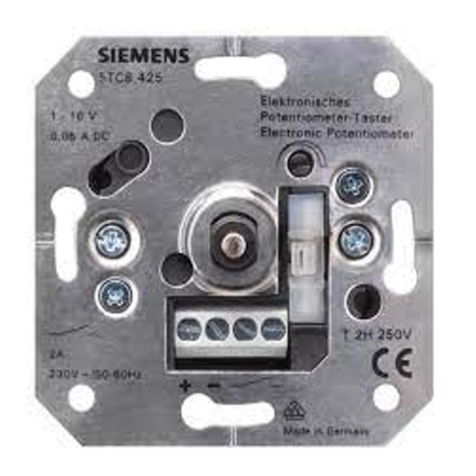
Siemens
Siemens DELTA 5TC8 425 Operating and mounting instructions
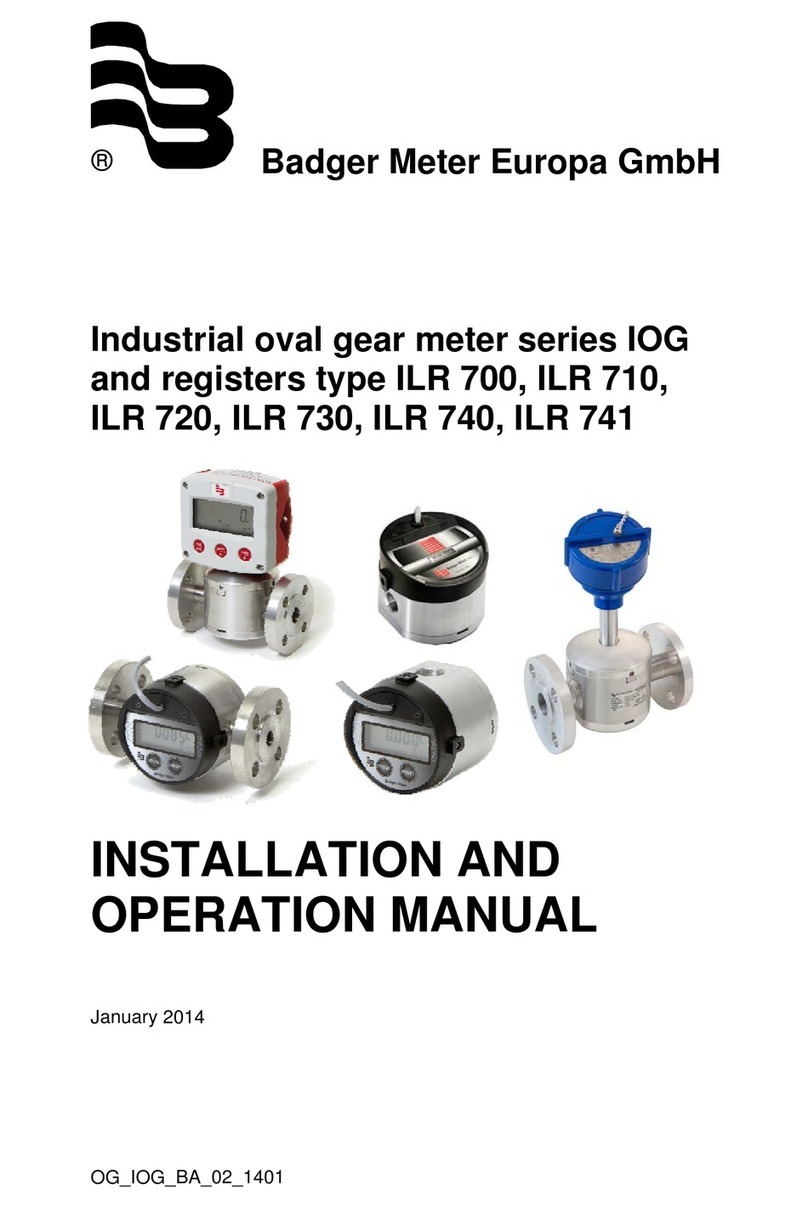
Badger Meter
Badger Meter IOG Series Installation and operation manual
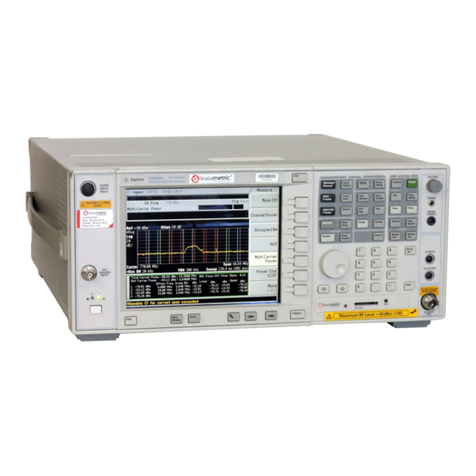
Agilent Technologies
Agilent Technologies PSA Series Installation note
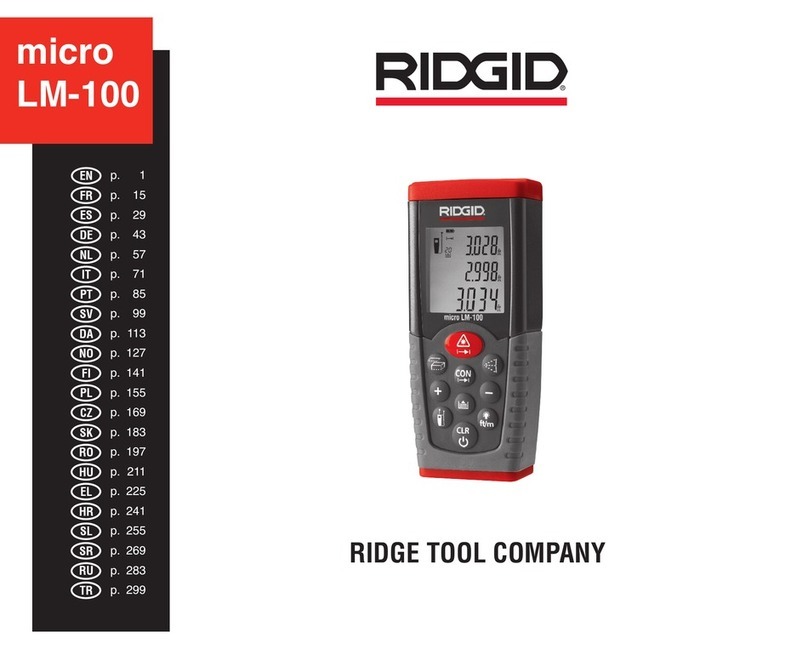
RIDGID
RIDGID micro LM-100 manual

Metal Work
Metal Work FLUX 0 user manual
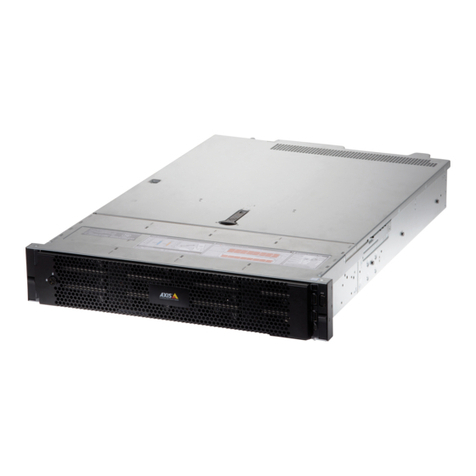
Axis
Axis S1148 installation guide
